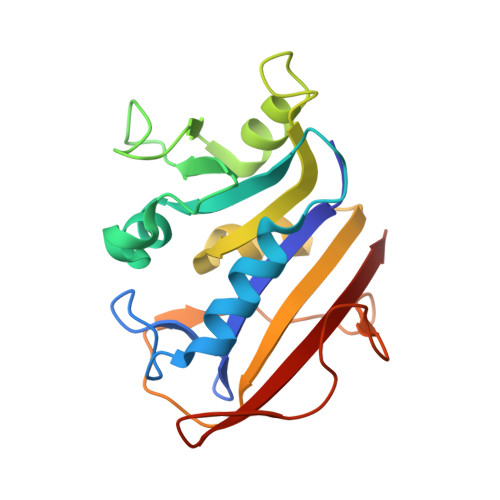Structural Insight into Effective Inhibitors' Binding to Toxoplasma gondii Dihydrofolate Reductase Thymidylate Synthase.
Vanichtanankul, J., Yoomuang, A., Taweechai, S., Saeyang, T., Pengon, J., Yuvaniyama, J., Tarnchompoo, B., Yuthavong, Y., Kamchonwongpaisan, S.(2022) ACS Chem Biol 17: 1691-1702
- PubMed: 35715223
- DOI: https://doi.org/10.1021/acschembio.1c00627
- Primary Citation of Related Structures:
7FGW, 7FGX, 7FGY, 7XI7 - PubMed Abstract:
Pyrimethamine (Pyr), a known dihydrofolate reductase (DHFR) inhibitor, has long been used to treat toxoplasmosis caused by Toxoplasma gondii (Tg) infection. However, Pyr is effective only at high doses with associated toxicity to patients, calling for safer alternative treatments. In this study, we investigated a series of Pyr analogues, previously developed as DHFR inhibitors of Plasmodium falciparum bifunctional DHFR-thymidylate synthase (PfDHFR-TS), for their activity against T. gondii DHFR-TS (TgDHFR-TS). Of these, a set of compounds with a substitution at the C 6 position of the pyrimidine ring exhibited high binding affinities (in a low nanomolar range) against TgDHFR-TS and in vitro T. gondii inhibitory activity. Three-dimensional structures of TgDHFR-TS reported here include the ternary complexes with Pyr, P39, or P40. A comparison of these structures showed the minor steric strain between the p -chlorophenyl group of Pyr and Thr83 of TgDHFR-TS. Such a conflict was relieved in the complexes with the two analogues, P39 and P40, explaining their highest binding affinities described herein. Moreover, these structures suggested that the hydrophobic environment in the active-site pocket could be used for drug design to increase the potency and selectivity of antifolate inhibitors. These findings would accelerate the development of new antifolate drugs to treat toxoplasmosis.
Organizational Affiliation:
National Center for Genetic Engineering and Biotechnology (BIOTEC), National Science and Technology Development Agency (NSTDA), 113 Thailand Science Park, Khlong Nueng, Khlong Luang, Pathum Thani 12120, Thailand.
















